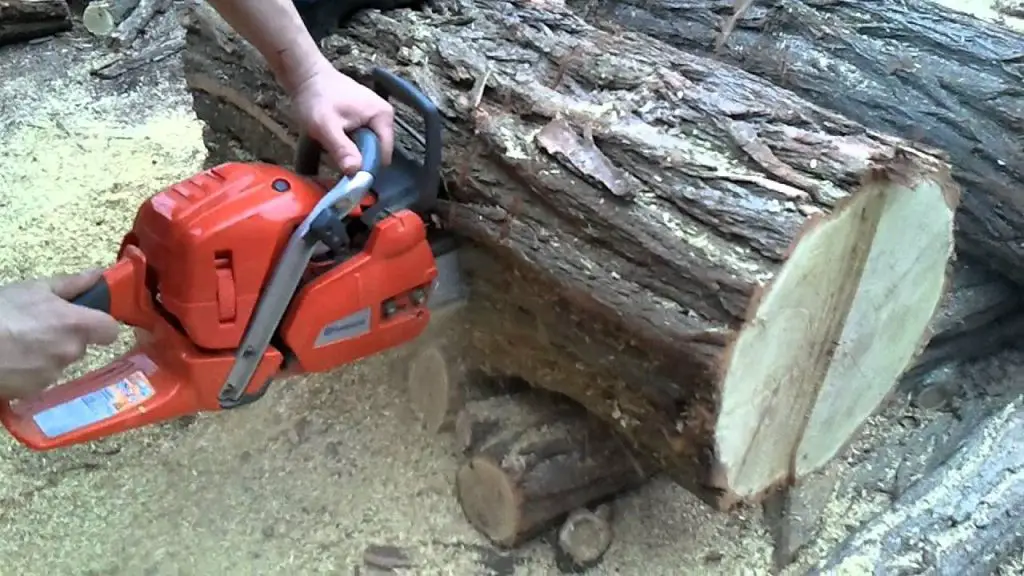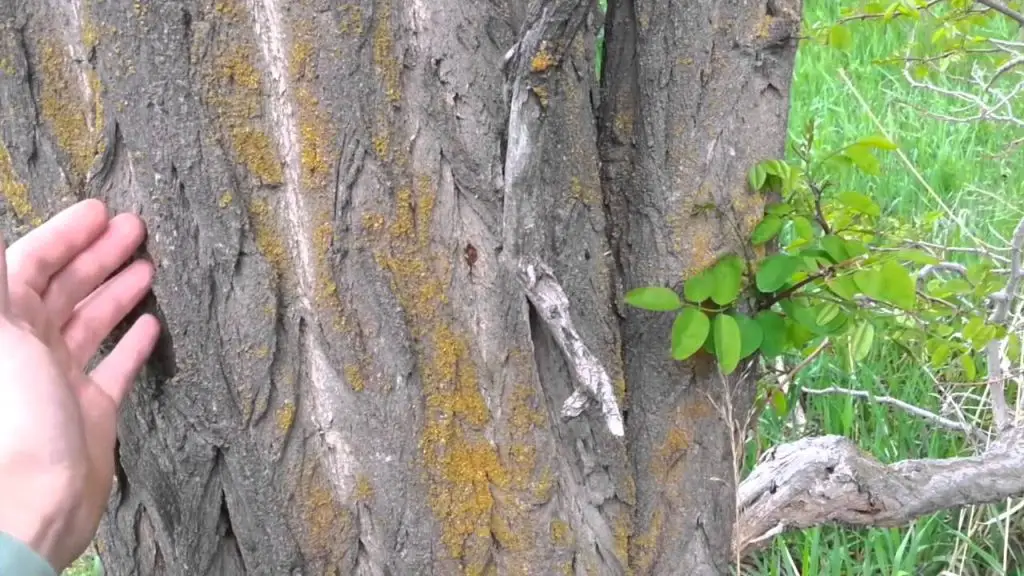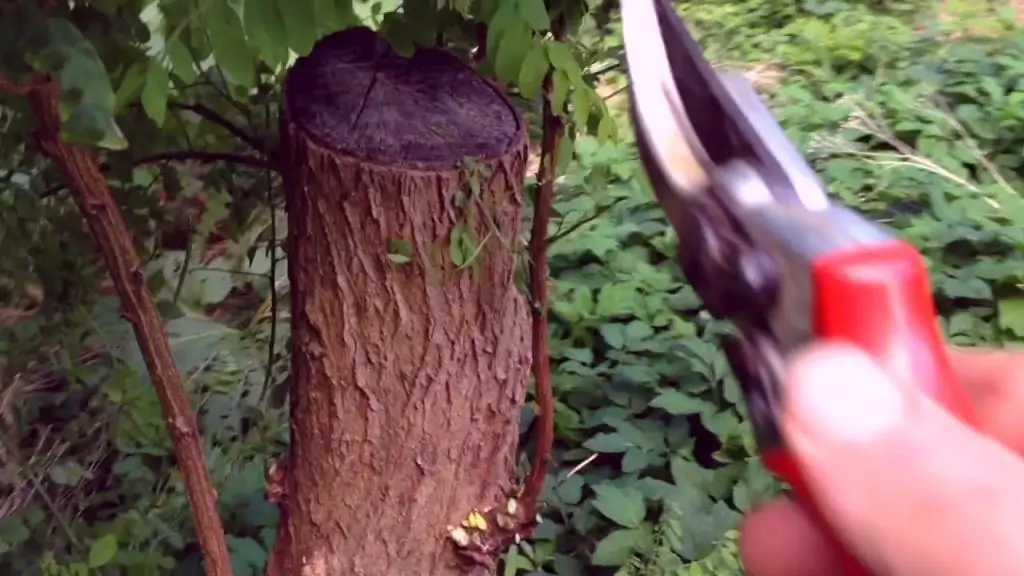Black locust firewood is an excellent choice of firewood and is prized for its extremely high heat production and low smoke generation.
Many choose to burn black locust firewood over other popular favorites such as ash or oak.
You’ll find that black locust is the ideal firewood to throw into the fireplace before you leave for work and let it smolder all day long. Not only will it do a great job of lasting the majority of the day, but it’ll also leave you with great coals to stoke a fire right back up when you get home.
Table of Contents
Summary
- BTU: 27.5 to 29.8 (Source)
- Weight: 4020 Ibs per dry cord
- Smoke: low
- Smell: mild, pleasant
- Splitting Difficulty: moderate to difficult
- Seasoning Time: 1 year
Black locust weighs is a heavy hardwood that has a very high density. It burns for a long time and produces excellent coals.
Black locust trees are native to North America but are also present in North Africa, Europe, and Asia. Typically, a black locust tree will grow between 40 and 100 feet, but some are reportedly 170 feet tall.
However, the black locust tree will only reach a diameter between 2 and 4 feet and has a relatively short lifespan despite its towering size.
Black locust trees produce beautiful, fragrant white, purple, or pink flowers in the spring.
A unique quality of black locust trees is that they grow faster than other hardwoods. Despite its rapid growth, it still produces hard, dense, hefty firewood.

Heat Production
British Thermal Unit, or BTU, measures the heat produced from any source. You will also see this unit of measurement on air conditioners, space heaters, and gas firepits. Black locust produces 29.8 million BTUs per cord.
Compared to other hardwoods and firewoods, black locust has a very high amount of heat in BTUs.
Because black locust is one of the densest hardwoods, it creates some of the highest-quality coals.
The constant bed of coals is excellent for fires that need to last a long time or to cook over the fire.
Be aware it is actually possible to get your fire too hot with black locust firewood for some wood stoves. There are stories of wood stoves turning orange from having too much locust packed into them. If your stove can not withstand a fire that hot, mix your black locust with other hardwoods while burning.
Smoke Production
Like other hardwoods, black locust creates a low amount of smoke. In fact, black locust produces even less smoke than different types of popular firewood commonly used in people’s homes.
Black locust creates very few sparks and is safe to burn indoors and outdoors.
Black locust is not preferable for smoking meats and food because it has a slight fragrance and will not add much flavor to your meat.
Seasoning Time
While you can technically season black locust for only 6 to 8 months, it is optimal to let it dry for 1 to 1.5 years. Letting it season for a more extended amount of time will give you a higher BTU and longer burning time, with less smoke.
Some black locust fans claim that it’s best to season black locust for 2 to 3 years.
Green black locust wood is between 26 to 28 percent. You need to bring that percentage down to 20 percent to be considered seasoned.
Seasoning time may very well depend on where you live. Living in a humid climate will take you longer to season your black locust firewood.
I personally recommend this General Tools Moisture Meter. It allows you to accurately gauge how wet your firewood is and whether it is sufficiently seasoned. Over time you can also see how quickly the moisture is dropping and how much longer you need to keep your firewood dropping until it is seasoned and ready to burn.
Press the sharp pins into the wood and you will quickly see the readout show the moisture ranging from 5% to 50%. It also has a Low/Mid/High indication depending on whether the wood is dry enough, so you don’t need to remember the actual values.

Burning Smell
Black locust creates a very faint but pleasant smell. You could describe the smell as woody, but really there is no distinct overpowering scent. Some people love this trait of black locus, while others feel that there is something left to be desired.
Creosote Buildup
Creosote is a dark brown tar deposited from wood smoke that can build up on the insides of your chimney walls. It contains tiny unburned particles of wood and sap found in smoke. Creosote can be extremely dangerous because of how flammable creosote is and will easily start a chimney fire.
Fortunately, black locust firewood has low quantities of sap and resin; therefore, it is a low creator of creosote. Compared to other typical firewood types, black locust has no more resin or sap.
Black Locust does produce a small amount of sap naturally. If you have an option, you’ll want to harvest your black locust trees in late Fall or early Winter when the moisture is low, and the sap production is slow.
Splitting
We’ve reached the negatives of burning black locusts: splitting.
Black locust gets a “difficult” rating for a reason. Black locust grows with an incredibly tight grain despite being small in diameter. The fast growth makes the grain tension so great that it’s hard to chop the wood up.
Along with this, expect lots of knots and branching of the wood.
Locust trees are also known for having sharp spines near the leaves, making handling the wood before splitting really difficult. Make sure you have a thick pair of leather gloves or latex dipped gloves to protect yourself from the bark.
After a full year of seasoning, it is best to split your wood in winter or early spring because the moisture content will be at its lowest. Make sure you get yourself a high quality splitting axe, because this hard wood is not easy to split in my experience. You don’t want to be spending all day swinging with a blunt axe.
Black locust firewood is not a kindling wood and performs poorly when used as such.
Identifying Black Locust Trees
Black locust trees are native to the United States and were initially found in the Appalachian Mountains, along with the Ozark Plateau.
Black locust has been widely planted and spread throughout the world. It is actually hard to control the spread of black locusts. Black locust rapidly grows and spreads out quickly. Some people turn to herbicides to help prevent the growth of black locusts.
In some areas, black locust trees are considered invasive. It is common for black locusts to take over fields or meadows because they enjoy the full sun and dry ground.
Naturally resistant to rot, black locust trees are a popular lumber choice for outdoor projects such as fences.
Black locust trees grow in a colony with all their root systems connected. These connecting root systems are why you’ll seldom find a lone black locust tree. If you’re cutting down a black locust tree, make sure you are not cutting the “mother” tree, or the whole colony can get sick and die.
When identifying black locust trees, look for:
Leaves
Grouped together, the leaves of the black locust tree have many small leaves (called leaflets) that make up a bigger leaf. These groupings are called compound leaves. Each leaf is 6-14 inches and has 9-19 leaflets on each. The leaflets are rounded at the bottom and come to a tip at the top.
Spines
Next to the leaves are the spines, always found in pairs. These spines are near the leaves or ends of the trees’ sticks and twigs. They are not found on the branches or near the bark. Some black locusts have many spines, while others have very few.
Bark
The bark of the black locust tree is reddish black and gray with orange grooves. These grooves are very deep and pronounced. The grooves form a diamond shape that runs up and down the trunk.

Branches
The branches of the black locust trees are zig-zaggy and reddish.
Flowers
Black locust flowers open in May or June and last for only 1 – 2 weeks. They are arranged in droopy clumps. The flowers are often cream-colored with a yellow center but can infrequently be found pink or purple. The flowers are incredibly fragrant.
Fruit
The fruit, or what most people think of as the seed pod, appears in late autumn and is there until early spring. They are flat and smooth and resemble a giant pea pod that is 2-4 inches long.
Black Locust vs. Honey Locust
There are two primary varieties of the locust tree; black locust and honey locust. Both have incredibly similar qualities, and both are fantastic firewoods.
Honey locust burns slightly less hot versus black locust. However, honey locust is much easier to split compared to black.
There is also a more pungent smell to honey locust, but it is still mild and pleasant to most.
Either way, black locust or honey locust, you have lovely firewood that will produce impressive BTUs with very little smoke.
Comparison to Other Woods
Here, I’ve taken some of the most popular firewoods to burn inside or in a wood stove and compared them to the black locust. You’ll see that black locust excels in almost every category.
| Firewood | BTUs | Ease of Splitting | Coals | Overall Quality |
| Green Ash | 20.0 | Easy | Good | Excellent |
| Maple | 25.5 | Easy | Excellent | Excellent |
| Bur Oak | 26.2 | Easy | Good | Excellent |
| Black Locust | 27.9 | Difficult | Excellent | Excellent |
As you can see, black locust excels in almost every category with the exception of splitting. Most firewood enthusiasts rank black locust wood along with ash, oak, hickory, mulberry, and beech.

FAQs
Can I burn black locust in my fire pit?
Yes, you can burn black locust in your fire pit. Just be aware that you are in for a long haul since black locust burns so slowly!
Also, have an ‘out’ plan for yourself since the coals of black locust firewood burn for so long. You’ll want to put those out before going to bed.
What does black locust firewood look like?
You can identify black locust firewood from the wavy appearance of the ridges on the bark edge of the firewood. You can also recognize it by its extremely tight-packed rings and extreme density. For its size, black locust will be heavy in weight compared to other types of wood cut to the same size.
Is it safe to burn black locust in a fireplace?
Yes, it is safe to burn black locust wood in the fireplace. It is actually ideal to burn black locust wood in a stove overnight or during the day while at work.
Is black locust smoke toxic?
The smoke of the black locust tree is non-toxic, along with its flowers. Black locust flowers have actually been used in traditional recipes to make things such as fritters and floral wines. However, the seed pods are poisonous to both humans and animals when consumed.
Is black locust wood expensive?
Compared to other favorite hardwoods, black locust is more expensive. Other trees are cheaper and easier to grow, making black locusts more valuable. However, it is well worth the average user’s cost of seasoned black locust.
Final Thoughts
Black locust firewood is considered, by many, the best firewood to use because of its high heat output and long-lasting coals. While, yes, black locust trees are hard to split, it is well worth the effort. This firewood will burn incredibly well, produce very little smoke, and will not have an overwhelming smell. If you are in an area where black locust is abundant, consider yourself lucky and get yourself some firewood for next year, pronto.
